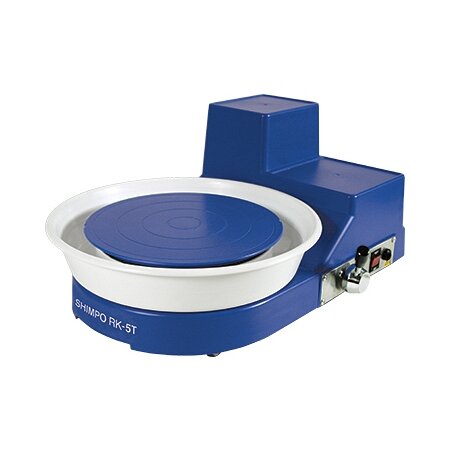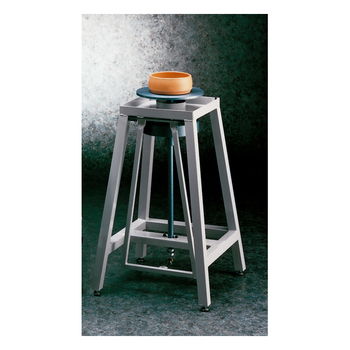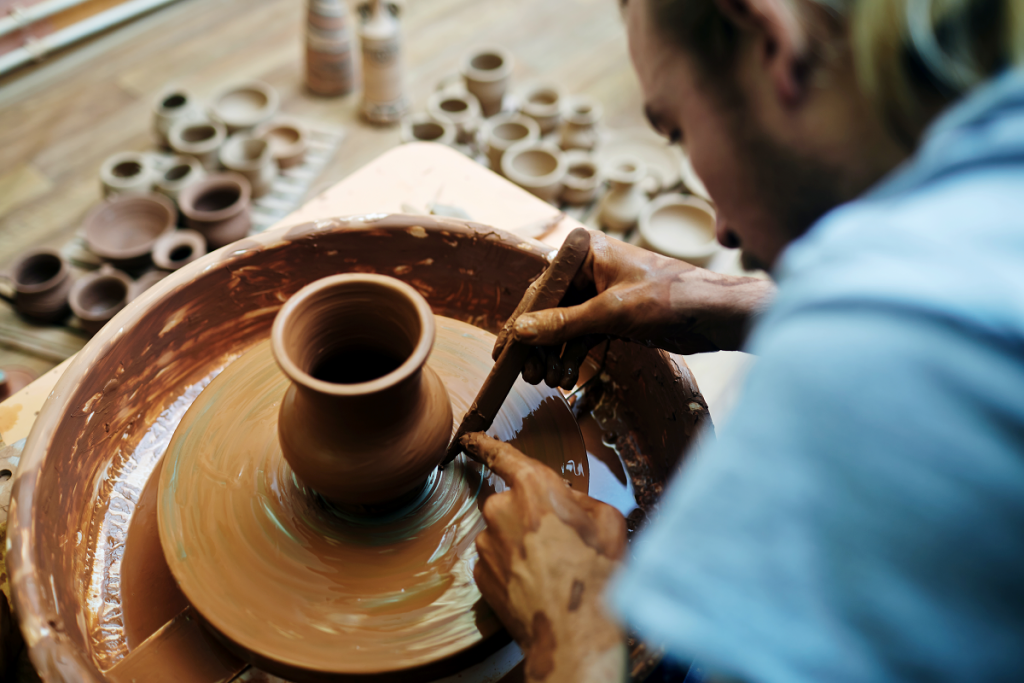
Every pottery lover, sooner or later, is faced with this choice: to buy a potter’ s wheel? And if so, how to choose it? Those who are just starting out, in fact, usually use shared tools in spaces such as workshops and schools. But as they move forward with experience and practice, buying their own tool becomes fundamental.
This is an important choice that we recommend you spend time on: not only because of the economic investment it often represents, but also because, being a very durable piece of machinery, the lathe will be with you for a long time. So it is necessary that it has just the features and qualities you need.
How much does a pottery wheel cost?
Or rather, the right question is: How much should I spend on a pottery wheel? The answer depends on you and what you need. Are you just starting out? Are you learning and dreaming of setting up a home studio? Or is ceramics your life path, artistic and professional? Depending on the level you are at it may make sense to invest in more basic tools or professional equipment.
A table wheel, small and electric-powered, can be ideal if you are just starting out or learning. It will help you get the hang of working with clay and is perfect for creating small objects. Prices, for this type of pottery wheel, range between €400 and €900.
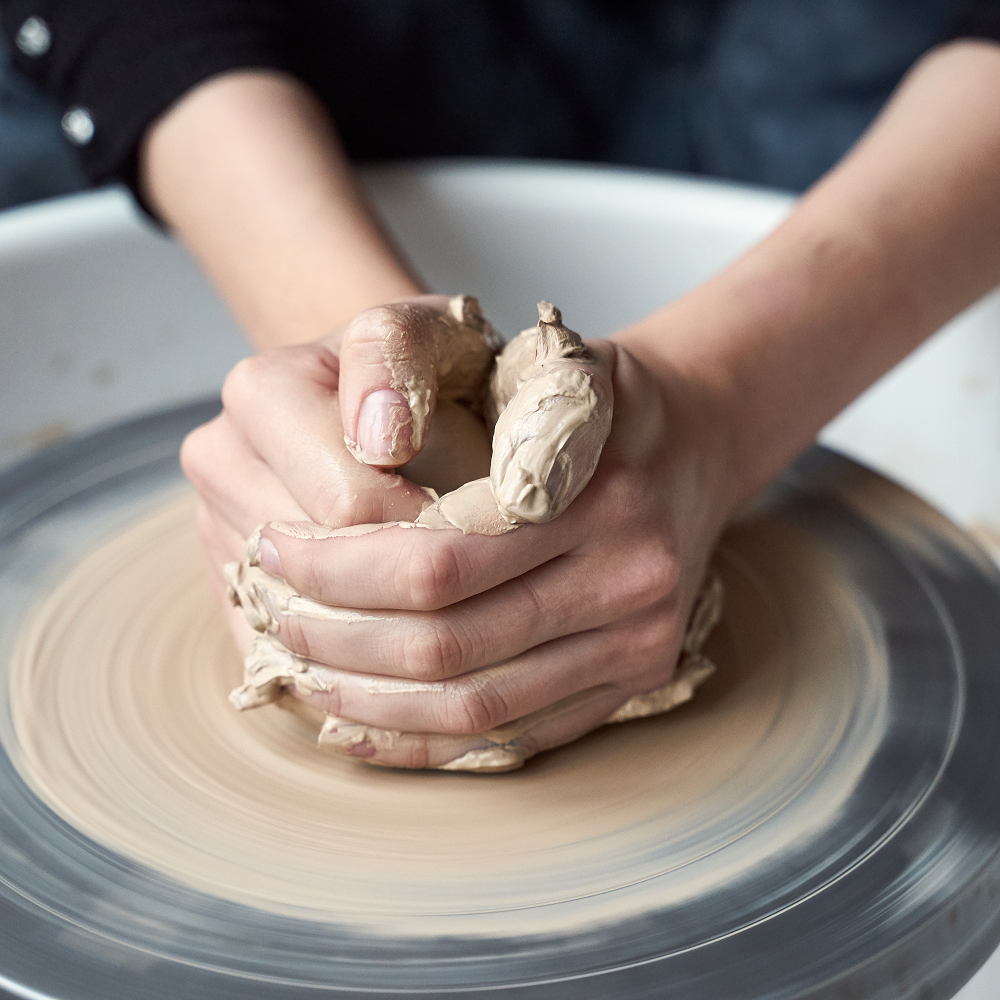
In recent years, on various marketplaces, it is also possible to find lathes priced under 200€. We decided to buy a couple of them for testing purposes, and the result is that we feel that we do not recommend their purchase: they are often not certified (CE) and being built in great economy can present problems and risks, such as a short circuit caused by the water needed for machining. Not to mention that in case of damage caused by these machines there is no warranty or insurance coverage. This is why Hobbyland has chosen to have only branded lathes in its catalog, with warranty and certified quality, even for the basic level. Then keep in mind that a branded lathe is also more easily resaleable, should you decide to upgrade to a higher level tool.
As the quality and performance of the lathe increases, so does the price, which reaches and often exceeds €1,000. A professional potter ‘s wheel in this category is certainly better suited for those with more experience: among its advantages, it offers a larger work plate and thus the ability to use larger amounts of clay and create larger objects, as well as greater stability and durability for those who work at an intensive pace. Buying a pottery wheel of this level is definitely a commitment. But by using, for example, an installment system (such as HeyLight or Scalapay), it is possible to spread the expense over time and thus better cope with a purchase that is certainly more onerous, but certainly more secure.
A pottery wheel is forever-or almost forever!

Buying a potter’s wheel also forces reasoning about your future prospects as a potter. If you are just starting out, in fact, it will be natural to lean toward a simple and cheaper tool. But also think about your path and goals. In fact, as you become more capable and develop your own style and ways of working, your needs will also increase: a faster wheel, or one with greater adjustability; or one with greater capacity to make larger works, and so on. Reasoning about the future now will prevent you from having to change wheel later!
Your working environment
A pottery wheel models can be very different and vary considerably in size and equipment. There are some that consist solely of a base and turntable, with a power source that can be motor or foot pedal. Others, however, have larger dimensions and a more complex configuration, with equipment such as a seat, work surface, splash barriers or other accessories.

The type of your workspace, then, will help you choose which tool best suits your space and needs. If you already have a work table, for example, your ideal wheel is one with a simpler structure. If you want to protect the space around you, we recommend buying a wheel with protective barriers, even better if they are removable: in some cases, in fact, guards can interfere with your mobility around the plate and thus affect your working style.
Travelling Potter’s Wheel: advantages and disadvantages
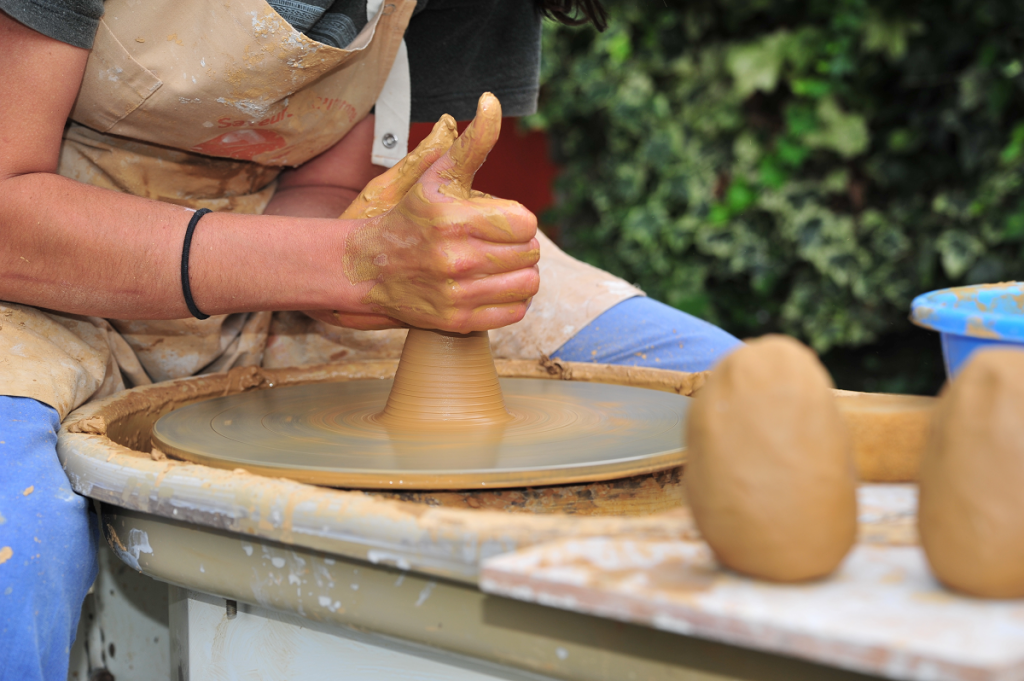
This aspect is also very important in directing your choice. Are you a teacher who uses the wheel for demonstrations and classes outside your workshop? Do you need to take it with you to trade shows and other occasions? Or are you planning to change or modify your workshop in the near future? All of these might be good reasons to buy a portable wheel.
Such a pottery wheel has a very simple structure and, unlike the studio one, is smaller, lighter and easier to handle. The model pictured has 2 interchangeable plates and a removable plastic splash guard. Its motor is quiet and has two directions of rotation with adjustable speed. On the flip side, consider that on a smaller wheel you will be able to work a smaller amount of clay, and the speed and rotational sensitivity of the plate will not be at the same level as on a studio pottery wheel. But as a traveling companion it is an absolutely versatile and reliable tool!
Ceramic potter’s wheel power supply: treadle or electric?
Although we mention it last, the power mode is one of the most important features to consider if you are thinking of buying a pottery wheel. The traditional wheel, as you may know, works with the thrust impressed by the foot on a pedal that operates the plate. The pedal wheel, therefore, requires more physical effort, and this is a factor to be taken into consideration. On the other hand, most current models are combined with an electric motor, which makes it easier to control the movement.
An electric-powered wheel, in addition to requiring no physical effort, offers a higher and more constant rotational speed, although learning how to manage the movement of the platter without too much abrupt acceleration can be difficult, especially for novices. In terms of operation, electric-powered wheel are distinguished by type of platen drive: belt-driven and direct-drive.
Belt drive is the most commonly used system. A pottery wheel with this drive can have different looks and sizes, from the compact table wheel to the more articulated design of a Shimpo Rk-55, but the operation is the same: a belt connecting two pulleys, one on the motor and one on the platter, and allowing the former to set the latter in motion. This drive is generally reliable: the only contingencies that can occur are slippage or belt breakage. In the former case the tension between the pulleys must be adjusted, while in the latter it will need to be replaced. However, these are quick solutions, allowing the wheel to return to perfect operation in a short time.
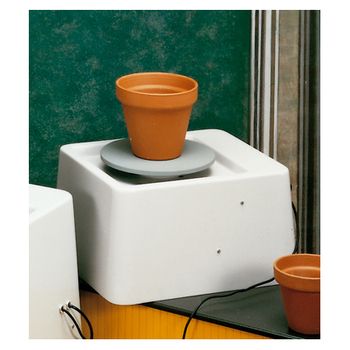
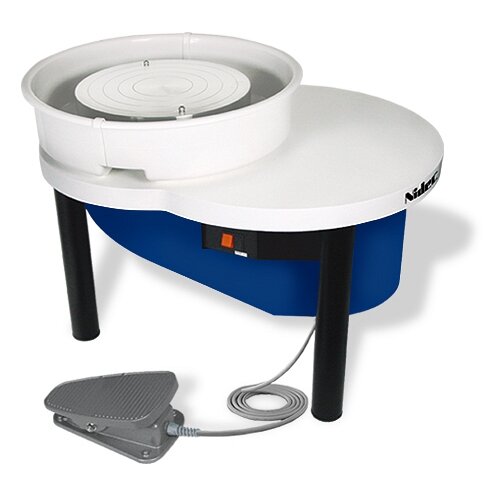
Direct drive, or Direct Drive, on the other hand, involves a DC motor connected directly to the wheel plate. The speed can be adjusted electronically, by foot pedal. A direct-drive wheel, such as these Whisper or RK-3E models from Shimpo, is definitely the most modern and reliable on the market, and guarantees not only continuous power, but also the near absence of noise, because the motor is really quiet.
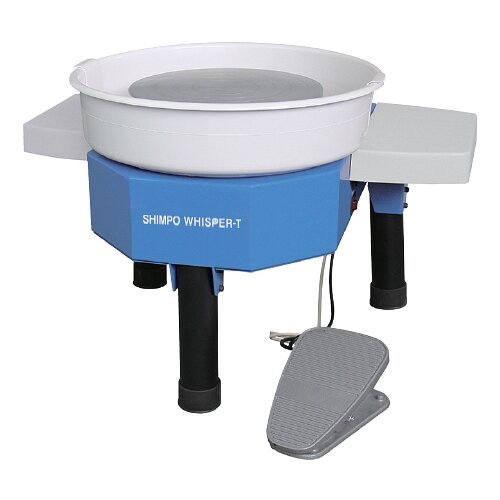
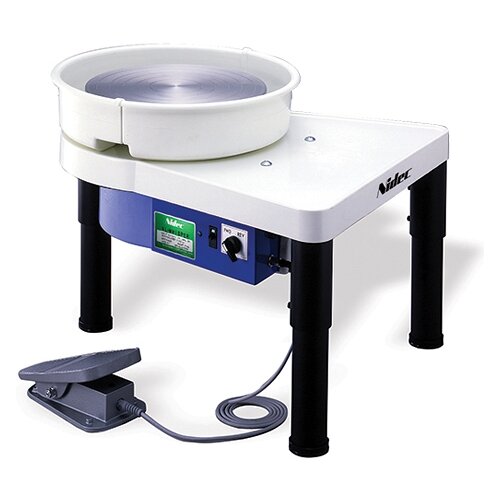
Whatever drive you prefer, other elements to take into consideration when choosing are the possibility of adjusting not only the speed but also the direction of rotation of the plate (very useful not only for customizing the work, but also to facilitate left-handed people!) and the power of the motor. A good wheel, in fact, must maintain a constant speed, and as a general rule we recommend buying a wheel with power ranging from 350 W upwards.
As with all significant choices, in short, buying a pottery wheel depends on multiple factors. But the most important of all, in the end, is you: your level, your needs, your artistic project.
With this guide, we hope to have provided you with some guidance and advice that will help you fine-tune your needs and make the best choice for your future as a potter!

